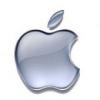-
Posts
10068 -
Joined
-
Last visited
-
Days Won
569
Content Type
Profiles
Articles, News and Tips
Forums
Everything posted by Hervé
-
If you took your E5500 HDD out and used it via a USB adapter on another machine running Mac OS X to do whatever was required, there's nothing wrong with that. It looks like you manage to boot the OS X installer on that E5500, right? I would suggest we try to identify the exact PCI ids of your HDD controller. You could do that by placing the lspcidrv kext (if you do not already have it) in /E/E of your installer (run myFix (quick) on it afterwards) and once booted up to main installer screen, go to Utilities->Terminal and type lspci -nn. That will hopefully give us the full hardware specs of that laptop and it may turn out that we need to patch the IOATAFamily kext. I remember helping a forum user to do that and it fixed his HDD detection issue, so you never know...
-
You tried to disable CE1 in BIOS as advised in that same thread? Looks like it solved the problem for a few people.
-
Hi, In theory, you can "upgrade" to Mavericks by doing a fresh install over your existing ML partition. You wouldn't lose anything. However, I would strongly advise that you 1st try a fresh install of 10.9 on a small dedicated partition. This could avoid any nasty surprises in case there are issues. At least, you'd keep your ML installation intact and you could make an image out of it to keep as a full backup.
-
Here are BIOS settings that are known to work on M4300 with nVidia Quadro FX 360M GPU under SL, Lion, Mountain Lion and Mavericks. These settings were tested and verified with BIOS A11 and A15 (don't go beyond version A15). Onboard Devices: . Integrated NIC = enabled . Internel modem = enabled . External USB ports = enabled . Parallel port = Off (or anything else) . Serial port = COM1 . PC Card and 1394 = enabled . SATA Operation = AHCI (ATA found to be working too, having forgotten to change to AHCI) . Module Bay Device = Enabled . Flash Cache Module = On or Off . ASF Mode = Off . Microphone = Enabled Video: . Ambient Light Sensor = Off . Brightness = max . Brightness (AC) = max . Primary Video = Onboard Video Security: . Admin Password = not set . System Password = not set . Internal HDD PW = not set . Password Change = Permitted . Password Bypass = Off or Reboot & Resume Bypass (or any other value) . Wireless Switch Change = Denied . Wi-Fi Catcher Change = Denied . CPU XD Support = Enabled . Signed Firmware Update = Disable . TPM Security = Off . TPM Activation = Deactivate . Computrace® = Deactivate Performance: . Multi Core Support = Enabled . Dynamic Acceleration = Off with Merom T7xxx CPUs (otherwise FSB speed is reduced), On with Penryn T8xxx/T9xxx CPUs . SpeedStep Enable = Enabled Power Management: . Auto On Mode = Off . Auto On Time = xxxxxx . USB Wake Support = Enabled (allows waking from USB when laptop is plugged on mains; no Sleep/Instant Wake issue experienced) . Wake on LAN/WLAN = Off Docking: . Undocking Method = Hot Undock . PCI Slot Monitoring = Enabled Silent . Universal Connect = Enabled POST Behavior: . Adapter Warnings = Off (or Enabled) . Fn Key Emulation = Scroll Lock . Fast Boot = Minimal . Virtualization = Off or Enabled . Keypad (Embedded) = Fn Key Only . Mouse/TouchPad = Touchpad-PS/2 . Numlock LED = On . USB Emulation = Enabled Wireless: . Internal Bluetooth = Enabled . Internal Wi-Fi = Enabled (keep to Disabled if you have an Intel card, they're not supported and need to be replaced) . Internal Cellular = Enabled . Wireless Switch = All . Wi-Fi Catcher = Enabled
-
Just updated the M4300 to BIOS A15 and A17 using above method, so I can confirm it works.
-
Fair enough, I've no non-C2D systems, so never actually verified that particular point. I indeed used v3.1.x when I briefly had a D420 earlier this year. Meantime, I guess you'd have to make a small partition at the end of your E6220 HDD with ML on it then...
-

"Extra" Folder for M4600 Setup for OS X Mavericks Setup
Hervé replied to Cyber_Redeem's topic in The Archive
I had a look at that /Extra pack and most specifically at boot plist; it's quite a weird one: C-States + C2/C3/C4 states are ticked in the plist, yet there's a nullCPUPowerManagement kext in /E/E... Drop SSDT is ticked, yet there are no SSDT files provided to replace the BIOS tables... There's no DSDT table either, but that might not be required. FakeSMC v4.3.10 is used in /E/E, maybe it would be useful to know if there was a particular reason for that version (myHack uses v4.0 by default and we recommend Kozlek's v5.x.xxx when attempting power management/graphics management tuning). PXHCD kext is for USB3.0 ports. No idea if this is supported in Mav or not, you'll see soon enough once/if you manage to install 10.9 I would start by correcting that boot plist to start with: untick all those C-States/C2/C3/C4 boxes and DropSSDT boxes to start with and tick SystemType whilst selecting Laptop model. It's not mandatory, but you could also either untick the GraphicsMode box (right now it uses the default res) or change it to your actual LCD resolution (usually the better option). SMBIOS plist for MBP6,1 is used, you may want to check if that's the closest match to the M4600 specs; if it's not, amend as appropriate. When in Mav 10.9, you may experiment with Kozlek's FakeSMC, SMBIOS plist and P+C States boot plist parameters, removing that nullCPUPowerManagement kext of course.- 20 replies
-
You should be able to make a Mavericks 10.9 installer with myHack 3.2/3.3 from SL 10.6.8. It's making a SL installer that can be problematic.
-
As a test, you could try to reboot your myHack installer and, once you get to the main installation screen after language selection phase, try to connect to your wireless network using the wifi icon at top right corner, next to language flag. At that very early stage, you would normally succeed using a card that's supported OOB, like the DW1510. If it still fails, then you could have a dodgy Mac OS installer & installation, since your card appears fully functional in other OS -> try to re-install from scratch.
-
Mmm, I wonder if Kozlek's recent FakeSMC devs support AMD CPUs. If they do, that could probably help your CPU throttling and power/heat management.
-
I do, but I usually prefer the easier/simpler method of the BIOS-extracted HDR file copied to a USB key/pen: take battery out unplug power cord plug USB pen in press and hold [END] key plug power cord in on red power LED, count 2s and release [END] key wait for BIOS update to complete and PC to reboot with new BIOS Works for D420/D430, D620/D630, D820/D830 and more... 'haven't tried on the M4300 yet, but I expect it to work since it's a very close cousin of the Latitude D Series.
-
Your GPU is based on the nVidia 7300 chip which was dropped by Apple when ML was introduced (along several other GPUs too). However, you could always try the MLPF hack to run ML in 32bit mode and have graphics support through Lion kexts. Have a look at the guides published in EDP->Supported Models with Guides->Dell. It works for the D620n so it should be the same for the D820n since they are very close. Bear in mind that not everything will work as there are some secondary limitations or bugs such as connections to Windows systems or iMessage. For Mavericks, it's a total no-go in the present circumstances: no graphics support at all so, although Mavericks can be installed, it's just unusable.
-
The patched Atheros kext suffice. It can be placed in /E/E, followed by myFix (quick) to keep /S/L/E completely Vanilla. AirPortAtheros40.kext.zip For those who wonder about the patch, it simply consists of adding the card PCI Vendor id/Product id 0x168c/0x002b to the list of ids defined in the plist file inside the kext: <key>IONameMatch</key> <array> <string>pci168c,30</string> <string>pci168c,2a</string> <string>pci168c,2b</string> <string>pci106b,0086</string> <string>pci168c,1c</string> <string>pci168c,23</string> <string>pci168c,24</string> </array> As simple as that.
-
Which BIOS version do you have? My M4300 currently runs BIOS A11, I haven't updated it yet to A17, which I think is the latest. However, my DSDT is just the table from the bootpack that I have slightly amended so that graphics card reporting looks right in "About this Mac", without the multiple ",,," (small error of string length in the DSDT source code). My M4300 boots ok to Mav desktop with my modded DSDT. You didn't keep your old DSDT in a renamed form like old-DSDT.aml that you could recall manually from the Chameleon bootloader with option DSDT=/Extra/, did you? I, too, have experienced that DSDT compilation error and I believe it happens only under Mavericks. I think it's related to the way the text file is saved under Mavericks as the compilator reports some text format issue.
-
I'm pretty sure your latest /Extra would do just fine to give us an idea of what's required.
-
Guys, please post your issues in Help&Support section. This is not the place for these matters.
-
Ha! You can't run Mavericks on a GMA X3100-based system. Sorry, that graphics chip was dropped by Apple since Mountain Lion: ML + Mav kernels are 64bit only there are no GMA X3100 64bit kexts Apple adopted OpenGL4.x since ML and that is not supported by X3100 hardware. At best, you might manage to install ML with MLPostFactor, which is a hack to run ML in 32bit kernel mode (there are a few bugs and limitations but it runs Ok generally speaking). Have a look at macrumors.com forum for that or at our EDP->Supported Models with Guides->Dell. Failing that, you best Vanilla version will be Lion 10.7.5.
-
Start with the Generic one and build from there; but I'm pretty sure Rosmaniac could share his /Extra with you.
-
Delete unwanted kexts from /E/E or moved them to /Extra/RemovedExtensions (useful to reuse if ever required), then run myFix (quick). Regarding the files I mentioned earlier today: copy attached FakeSMC kext to /E/E FakeSMC.kext.zip copy attached DSDT + plists to /Extra DSDT.aml.zip org.chameleon.Boot.plist.zip smbios.plist.zip copy attached HWMonitor to Applications folder HWMonitor.zip run myFix (quick) and reboot. run HWMonitor and observe.
-
That's an issue with your headset, nothing specific to Mac OS X. Some are awkward to put back in BT pairing mode if they were already paired to a computer right before.
-
What are the specs of that laptop, especially the graphics card/chip?
-
Special kernels like Nawcom's legacy kernels do that.
-
Big "?" for your Quadro FX 4600 graphics card, but the rest should be Ok. Hopefully, these Xeon dual core will be better supported than some quad core that gave trouble to some users. Make sure to use one of the the latest Chameleon boot loaders. I've seen strange CPU things with r2266, but r2263 was Ok.
-
Enable/activate/tick/set "Generate P-Sates" and "Generate C-States".
-
I'll send you my M4300 kext+SMBIOS plist tonight. I guess you might have done something wrong. When you do these things, you have to make sure to remove the following kexts from /Extra/Extensions: FakeSMC v4.0 (obviously replaced by Kozlek's more recent version) CPUMonitor NullCPUPowerManagement VoodooTSCSync (keep only on systems with Intel 945GM chipset) You can also get rid of: IOATAFamily SleepEnabler Then, make sure to enable P-States & C-States in your Chameleon boot plist.


